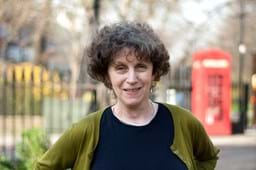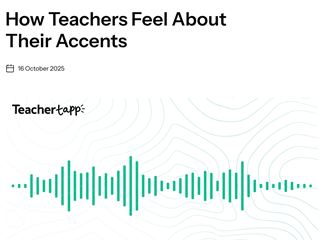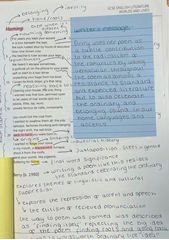However, it’s much harder to define what that knowledge should be. Knowledge is boundless, so choices have to be made. What those choices should be is open to debate. Should knowledge look outwards towards the world, and what’s useful, in adult, working life? Should it mirror or prepare for academia, following the structures of knowledge that apply in the academic study of the subject? Should it aim to provide a broad, liberal education, offering the kind of cultural awareness that fulfils expectations of a well-educated citizen? Is knowledge of any kind a ‘good’, a way of inculcating a thirst for learning that will continue into adult life, in other words what you know being less important than the fact of knowing more in any field? Whatever one’s view on these ideas about knowledge, it’s difficult, in a subject like English in particular, to delineate basic minimum knowledge without setting up unnecessary limits, or suggesting that the knowledge, of whatever kind, is simple, tidy and clear-cut, as opposed to complex, open-ended, wide-ranging and sometimes messy at the edges.
Without wishing to repeat my earlier blog on this, I’ll simply restate my view that knowledge, whatever its content-base, should be a synthesis of information, conceptual understanding and skill. The three are intimately related. Knowledge involves bringing new information into your existing conceptual framework and changing that framework in the light of the new material. It involves changing and developing thought processes and ways of seeing, so that you apply new thinking to fresh situations. Fact retention is part of this process, but just the starting-point rather than the ultimate aim. It takes information, skill and understanding combined, what Arthur N. Applebee calls ‘knowledge in action’, to make use of new information, turn it into insights and apply them in fresh contexts. If you can’t do that, your knowledge is of limited use. Understanding and skill are needed to make information work for you.
Understanding what’s significant and what isn’t
I want to consider one key aspect of this in relation to English literature, to show how information, on its own, isn’t enough, even in the narrowest terms of knowledge for examination success. A key element in what students are required to do, in order to get high grades at GCSE and A Level, is to make judgements about what is significant or not. The words ‘significant’ or ‘judicious’ crop up again and again in specifications and in examiners’ reports. The examiners are looking for good judgement on what is worth saying. Points made have to be well chosen ones. This is no faddish requirement that comes and goes. It is at the heart of what it means to have genuine knowledge in the subject. If students latch onto insignificant aspects of a text, in an unseen, or in essay on their set text, they will have failed to recognise what matters, the key, essential aspects that make this text special, make it stand out from others, or fall within a tradition or set of conventions. Understanding about what is significant is… hugely significant.
This is something that at EMC we have been addressing on A Level and GCSE CPD courses for many years. We come back to it frequently with teachers whose results haven’t been as good as hoped for, and who blame poor writing skills for this. We have discovered, through our work with schools, that when students’ results are disappointing, it is often not so much to do with their poor writing, their lack of structure, poor punctuation, inadequate paragraphing, inability to write a good opening paragraph or embed quotations, to follow up on evidence with a sentence of analysis, or any of the other elements of writing that we have become so obsessed with in recent years. The truth is that the P in PEE, or PEEL, or PETAL or any other formula, has been sadly neglected. Points are what essays hinge on – having good, relevant and significant ideas to put across. Any old point won’t do, like noticing a tiny bit of alliteration in a poem, or making a big deal out of the use of caesura, stichomythia, iambic pentameter, enjambment when there are much more significant features leaping out at an expert reader. Latinate terms used only to prove that you know Latinate terms are worse than useless. The same is true of grammatical constructions, whether it’s a tricolon, or asyndeton. An exaggerated focus on the terms makes it highly likely that students will want to make sure they get them in, and end up talking about what is insignificant rather than what’s significant, often with no real thought about effect. It’s topsy-turvy. Observe something important and make a good point about it, don’t remember lots of terms and then search for examples in the text to show that you know the label. If a term helps you to explain what you’ve observed, then brilliant! Terms, including Latinate ones, can be learned along the way, as a shorthand, to act in the service of ideas. In a nutshell, knowledge of terms and drilling in essay technique are irrelevant if students don’t understand what is significant about a text.
Can a knowledge organiser help define significant knowledge?
In theory, knowledge organisers could be a great way of providing a summary of significant knowledge about texts or topics, so long as it’s just a summary – the bare bones of what is a much richer set of discussions. The problem also remains defining what is significant knowledge, rather than assuming that because there’s stuff written on a neat looking grid, it’s automatically captured what’s most important about the text or topic. Equally, there’s often an elision in knowledge organisers between ‘what’s important in the text’ and ‘what’s important for students to learn’. This conflation can lead to some oddities and confusions.
I have no fundamental objection to knowledge organisers. In fact, I think they could be very useful in helping students understand what’s most important to know about a text, but I sometimes find those posted online disappointingly thin and random in the knowledge they identify. They don’t seem to capture the most significant aspects of the texts or topics they cover. I’ve been asking myself, ‘what would a good knowledge organiser look like?’ and realise that, in fact, EMC has, in a way, been advocating a particular form of knowledge organiser for many years, not with that name, and with some major differences, but nevertheless having many of the same features and possible benefits.
An agenda for the study of a text
Over many years, we have advocated a number of approaches to help students recognise what’s most significant and interesting in a text. These have been designed to teach students how to make judgements, sift knowledge and decide what to apply to any given text or topic. One of the most powerful of these approaches has been the idea of an ‘agenda’ for the study of texts.
The agenda is a working document, not a definitive, final summary of key aspects but something to be added to and developed over the course of study, with students contributing to its development. It is introduced early in the study of a text, put up on the wall, on a flipchart, or made readily available on a whiteboard, as a shared set of understandings or ideas for the whole class to refer to in the course of studying the text. It starts with some initial observations, perhaps with the identification of emerging themes and stylistic traits, on the basis of a shared reading of the first chapter, or after reading short fragments from the text. The teacher can, at this early stage, tease out significant elements that students might look out for, think about and be alert to as they’re reading the text. It makes the first reading an active one, in which the students are aware of what is especially interesting about this text, in relation to others. As time goes on, in the course of reading and study, more key elements emerge and are elaborated upon. So for a novel this might include the key themes, aspects of style, narrative techniques, voice, methods of characterisation, symbolism and so forth. The ‘agenda’ gradually fills out, and gaps are filled in, so that by the time students do their exams, they have a great, succinct overview of what is important to ‘know’ about that text. Usually the agenda is no more than one to two sides of A4 of headings but behind that is a huge amount of discussion and reference to the text that has led to this synopsis of key ideas.
You could definitely say that the agenda is a form of knowledge organiser. It itemises aspects of a text that are worthy of consideration. But it has some important elements that differ from some of the knowledge organisers currently being shared on the internet.
First, it is provisional, not fixed. It is clear from the start that it will develop and that students will contribute to that development, adding to it, making it more sophisticated and subtle, questioning the ideas raised and refining them. There is scope for students to change the agenda, and for teachers themselves to discover new things, whether through class discussion, their own secondary reading or conversation with other teachers, and add these to the agenda. It opens possibilities rather than narrowing them down to a fixed list. It allows for higher than anticipated expectations being fulfilled.
Second, its stated aim is to focus on what’s significant in the text itself, rather than muddling that up with what students should be learning through the study of a text. Knowledge organisers on texts tend to be more along the lines of ‘here’s what I think students should learn while studying this text’, rather than, ‘here’s what’s significant to know about this text.’ It may seem like a subtle difference but I think it’s an important one. The first is the teacher’s agenda for what they want students to learn. The second identifies what’s of key interest in the text itself. For example, in an agenda on Jane Eyre for A Level you might start with the identification of the overriding narrative voice – a first person retrospective voice. By the end of the study of the text, this bald idea will undoubtedly have expanded, to include subtle shifts at different points in the novel. The aim isn’t to learn the term ‘first person retrospective voice’ but rather to discover what’s distinctive about the voice of this novel. It allows you to reject the idea of retrospection if it no longer applies at key moments in the novel, when the voice becomes more immediate and direct, as if recounting something happening in the moment, or to take into account the way the voice seems to vanish and become almost like a third person narrative at times, with most of the story told through dialogue. Students using an agenda like this will think critically about the text, rather than simply using a label like first person retrospective voice and thinking ‘job done’ because they’ve used the right label. Labelling isn’t what we want them to do in English.
Finally, and most importantly, the agenda places the emphasis fairly and squarely on significant knowledge about a text. It’s not based on facts – the names of the characters, or the plot – who does what, when and how, nor on the life of the author, nor on broad, sweeping statements about the times in which he or she lived. It doesn’t set out facts, in other words. Knowledge of these facts is assumed. The expectation is high, that students will know the names of key characters and what happens in the plot. These facts are just the starting-point, the most limited kind of information, upon which really rich knowledge is based. So having a knowledge organiser that is predominantly about the facts of the text seems to set the bar way too low. It’s nothing like challenging enough for most students.
So, knowledge organisers (or agendas)? Yes definitely. But let’s make sure they really are about knowledge in its richest, deepest sense rather than a limiting, thin accumulation of not very significant facts.
An example agenda for Jane Eyre
This was constructed as a starting-point for teachers to develop with students.
Themes
- Women and their place in the world
- Men and masculinity – men as father-figures, oppressors, suitors
- Parents and families, the orphan or motherless child
- Education
- Class, servants and carers
- Childhood and adulthood
- Love, sex and sexuality, marriage
- Loss of innocence
- Duty versus desire
- Religion
- The mysterious & supernatural
- Changing environments
- England and the wider world/colonialism
- Violence
- Madness
Genre
- Romantic fiction – (including the Byronic hero)
- The Gothic (settings, terror, the vulnerable heroine, ancestral guilt etc.)
- Rites of passage novels
- Elements of the 19th century social realist novel (e.g. the Lowood scenes)
Characterisation
- Character contrasts and foils e.g. St John Rivers/Rochester, friends/sisters
- Character types explored (and subverted?): the mother-figure, the potential romantic hero, the plain quiet heroine, male aggressors, female role models, family members
- The mad wife
- The absent mother-figure/surrogate or failed mothers: Bessie, Mrs Read, Miss Temple
- Impact of 1st person voice on exploration of character – all seen through Jane’s point of view
- Use of names to signal key qualities of characters, for example Miss Temple
Narrative techniques
- Narrative voice: single first person voice with shifting narrative perspective (sense of adult reflecting back stronger at times); direct address to the reader
- Prose style: elements of metanarrative (e.g. address to reader); broader reflections on the place of women; though a recollected account, the present tense sometimes used at moments of intense drama or emotion
- Structure: linear, episodic structure associated with rites-of-passage novels; the use of changing settings signals, new episodes; use of narrative time – broadly chronological telling
- Symbols and motifs: doors opening and shutting (connects to episodic structure), colours (red, black, white), natural imagery, the moon (female symbol), symbolic use of weather (e.g. the storm and splitting of the chestnut tree), narrative as a motif (e.g. Jane reading picture books at the start of the novel), the attic and its significance, houses, dreams, the wedding veil
- Settings and shifting settings: both the Gothic and the realistic elements in the novel represented in the settings at different points; settings part of the episodic structure of the novel
- Ending: conventional romantic fiction ending, with a twist – the hero softened, subdued by injury and thus the heroine is in a position of greater power within the marriage.




